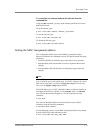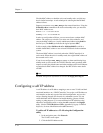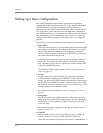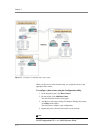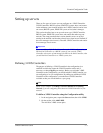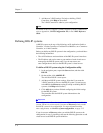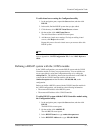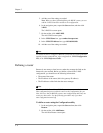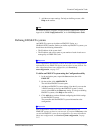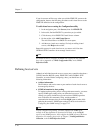
Essential Configuration Tasks
3-DNS
®
Administrator Guide 5 - 3
domain name to a pool of virtual servers, and it specifies the load
balancing modes that the 3-DNS Controller uses to choose a virtual
server from the pool.
When a local DNS server requests a connection to a specific domain
name, the wide IP definition specifies which virtual servers are eligible
to answer the request, and which load balancing modes to use in
choosing a virtual server to resolve the request.
For information about configuring wide IPs and choosing load balancing
modes, please refer to Chapter 2, Load Balancing, in the 3-DNS
Reference Guide.
◆ Global variables
You can configure global variables that apply to all servers and wide IPs
in your network. However, the default values of the global variables
work well for most situations, so configuring global variables is optional.
For information about configuring global variables, see Configuring
global variables, on page 5-17.
Setting up a data center
The first step in configuring your 3-DNS network is to create data centers. A
data center defines the group of 3-DNS Controllers, BIG-IP systems,
EDGE-FX systems, and host systems that reside in a single physical
location. For each data center that contains a 3-DNS Controller or a BIG-IP
system, you can also define a router. Figure 5.1 on page 5-4 shows an
example of a data center.
The advantage of grouping all systems from a single physical location into
one data center in the configuration is to allow path information collected by
one server to be shared with all other servers in the data center. The 3-DNS
Controller uses the big3d agent to collect path and metrics information
about the other servers, and their virtual servers, in the data center. The
3-DNS Controller then applies path metrics results to all the virtual servers
in the data center when making load balancing decisions.
Note
You must configure at least one data center before you can add servers to
the 3-DNS configuration.



